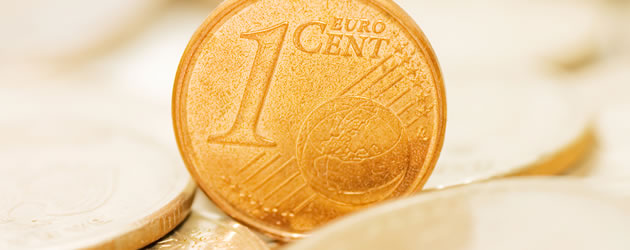Pound Sterling to Euro (GBP/EUR) Exchange Rate Advances beyond 1.41
The Pound Sterling to Euro (GBP/EUR) exchange rate rose to yet another fresh 7-year high after Bank of England Governor Mark Carney adopted a hawkish stance on interest rates.
Carney implied that the BoE is moving towards increasing borrowing costs when he stated that loosening policy further would be foolish.
These comments, coupled with the expectation that today’s UK industrial production report will show improvement, buoyed the Pound.
The Pound Sterling to Euro (GBP/EUR) exchange rate is currently trading in the region of 1.4133
Earlier…
GBP/EUR Exchange Rate Achieves Fresh High as ECB Launches QE
As the European Central Bank (ECB) launched QE the Pound climbed to a fresh seven-year high against the Euro.
The Pound Sterling to Euro (GBP/EUR) exchange rate pushed above the 1.40 level and rose to a high of 1.4090.
The Euro remained trading in a softer position against its British peer despite the British Retail Consortium’s like-for-like sakes report coming in at 0.2% in February rather than the 0.5% expected.
Tomorrow’s UK industrial/manufacturing production reports could see the Pound climb higher still as both figures are expected to show improvement.
So will the Pound climb above 1.41 before the weekend? Quite possibly.
The Pound Sterling to Euro (GBP/EUR) exchange rate was trading in the region of 1.3977
Earlier…
The Pound Sterling to Euro (GBP/EUR) exchange rate advanced beyond 1.39 on Friday, and the pairing has the potential to push above the 1.40 level if UK data continues to impress.
Pound Sterling to Euro (GBP/EUR) Exchange Rate Trends Above 1.39 as ECB Prepares QE, UK Data Supports BoE Rate Increase
Over the course of this week the Pound Sterling to Euro (GBP/EUR) exchange rate touched several fresh 7-year highs before closing out the week trending above 1.39.
A number of factors supported Sterling’s upswing against the Euro, from the UK’s impressive Manufacturing and Construction Purchasing Managers Indexes to European Central Bank (ECB) quantitative easing concerns.
Both the manufacturing and construction reports showed stronger-than-forecast expansion, boding well for the UK’s first quarter growth.
After Thursday’s ECB interest rate announcement, President Mario Draghi delivered his policy statement. The central bank chief stated that the quantitative easing programme outlined in January will be launched on Monday 9th.
He also implied that the programme could extend beyond the initially proposed September 2016 deadline
Additionally, although the UK’s Services PMI failed to print at expected levels, the index still showed strong growth in the nation’s main sector.
Analyst Ranko Berich said of the common currency’s weakness; ‘The fall in the Euro over the last couple of weeks has been nothing short of a collapse, with both the Euro-Dollar exchange rate and Euro-Pound exchange rate plumbing multiyear lows. A powerful confluence of factors has contributed to the Euro’s demise – monetary easing from the ECB, political uncertainty and a rampant US Dollar that has laid the Euro’s weaknesses bare’.
The Euro to US Dollar (EUR/USD) exchange rate also fell beyond an 11-year low this week as impressive US employment figures upped the odds of the Federal Reserve increasing interest rates in June.
The ongoing Greek debt negotiations are another factor keeping the Euro under pressure.
Pound Sterling to Euro (GBP/EUR) Exchange Rate Forecast
Although the Pound fell back below the 1.39 level against the Euro before the week’s end, the GBP/EUR pairing has the potential to approach 1.40 in the days ahead.
The European economic docket is looking a little lighter next week, but there are a few reports to be aware of.
Germany’s trade figures and final consumer price index will be in the spotlight, as will the Eurozone’s Sentix Investor Confidence measure and Industrial Production data.
The currency bloc’s sentiment index is expected to advance from 12.4 to 15. A disappointing result would be Euro negative, but an on or above target figure could help the common currency recover some ground against Sterling.
The UK’s Industrial and Manufacturing Production numbers will also impact GBP/EUR trading.
Both figures are forecast to show improvement, with industrial production set to rise by 1.3% on the year in January (up from 0.5% in December) and annual manufacturing production predicted to climb from 2.4% to 2.6%.
Positive UK ecostats will support the case for a 2015 interest rate increase and lend the Pound support.
On Friday the Pound Sterling to Euro (GBP/EUR) exchange rate was trading in the region of 1.3859



